Level Up Your Site: Digging Deep Into Grading
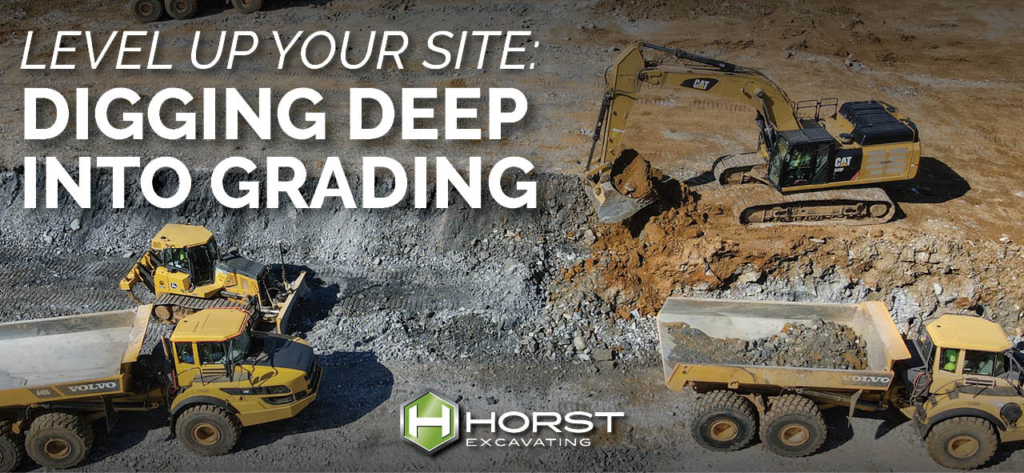
Grading isn’t just for teachers; it also happens on construction sites. But the name is where the similarities end.
Most construction projects with a site work package require some amount of grading. This essential step optimizes your plot of land by creating the ideal mixture of flat areas, embankments, and depressions for your site. In this blog, we’ll dig into this type of work so you’ll have all the information you need to understand:
- What is Grading in Construction
- Why is Grading Important
- What the Grading Process Looks Like
- Factors that Affect Grading
- How to Choose the Best Grading and Sitework Contractor
What is Grading in Construction?
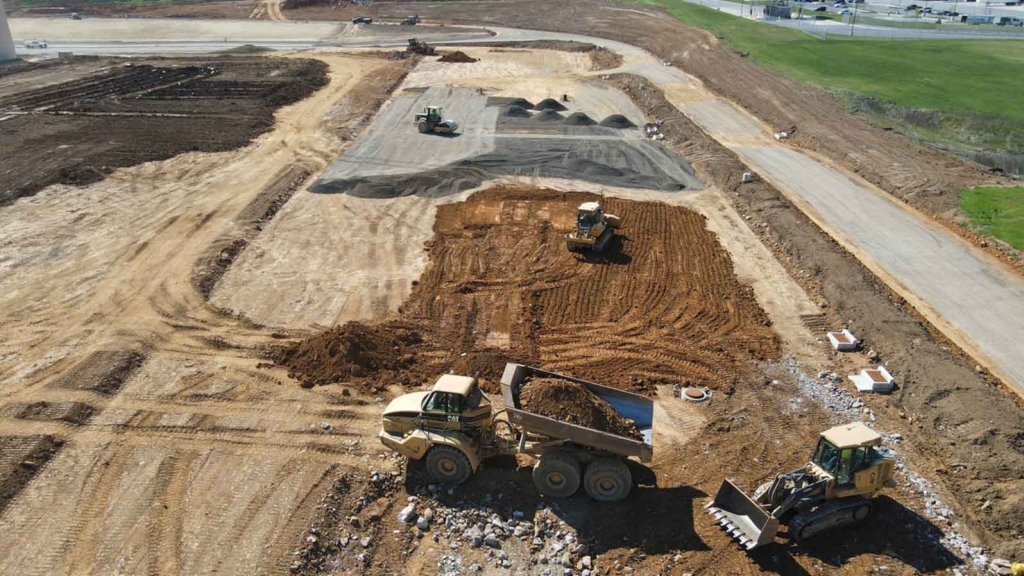 Put simply, grading is the process of moving soil or fill from one place to another to achieve a specific scope or elevation. This can range from level and compacted land for foundations to sloped soil that enhances drainage.
Put simply, grading is the process of moving soil or fill from one place to another to achieve a specific scope or elevation. This can range from level and compacted land for foundations to sloped soil that enhances drainage.
Excavators and site work contractors typically use large construction equipment like scrapers, excavators, graders, and dozers to dig up, pile on, and redistribute earth according to the site plans. Then, equipment like rollers and compactors compact and stabilize the soil, ensuring a long-lasting base for your site.
Many grading contractors also specialize in other types of site work. At Horst Excavating, we offer a wide range of site work services (in addition to grading) to ensure your new or renovated building has a sturdy foundation and reliable infrastructure.
Why is Grading Important?
Grading helps to customize a basic plot of land into one that’s perfectly suited to your new building. Here are some of the reasons why it’s so important to transform the profile of your land.
Structural Integrity
The ground beneath any structure needs to be firm and stable. Otherwise, it can introduce a host of problems that will impact your building and site infrastructure. To achieve this, your excavating contractor will grade the area to ensure it’s uniformly compacted and has the correct slope.
Drainage
A site that drains properly is one that’s designed to direct water away from your structures and towards drains and designated runoff areas. Grading creates paths that encourage rainwater to its designated place on site. This reduces damages due to flooding and other related issues. Learn more about the importance of stormwater management here.
Land Optimization
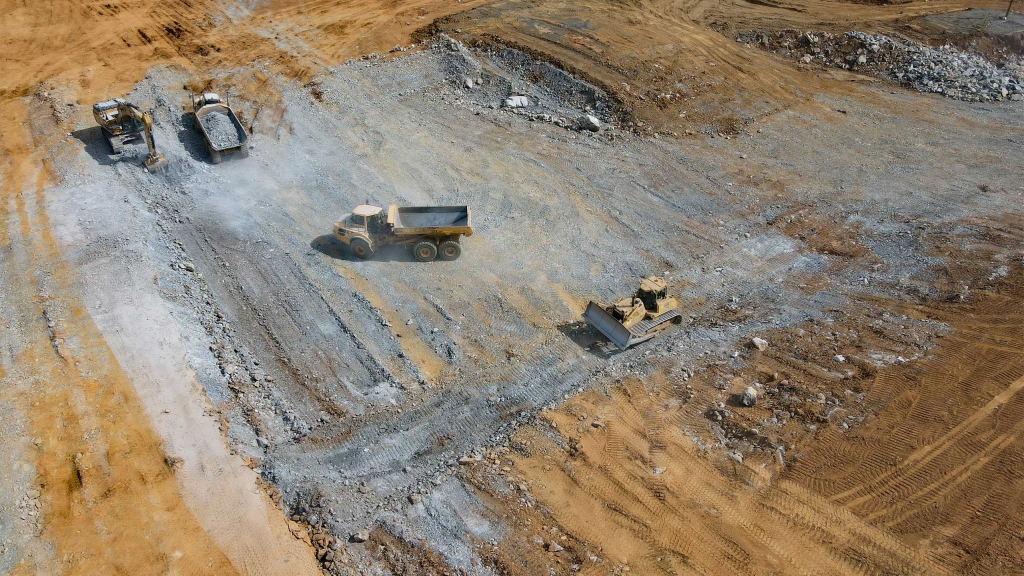
The Grading Process
What does the grading process look like, and how does it fit into the context of your construction project as a whole? While the exact answers to these questions will vary based on your specific project, it typically follows these steps.
Planning & Site Evaluation
Before dirt is moved, civil engineers and landscape architects will evaluate the site and create a strategic grading plan to optimize the site.
Land Clearing
With a team assembled and a plan in place, construction equipment can be mobilized. Typically, the first step is land clearing. Your site work contractor will remove any vegetation, debris, or existing structures to create a blank slate for your project.
Cut & Fill
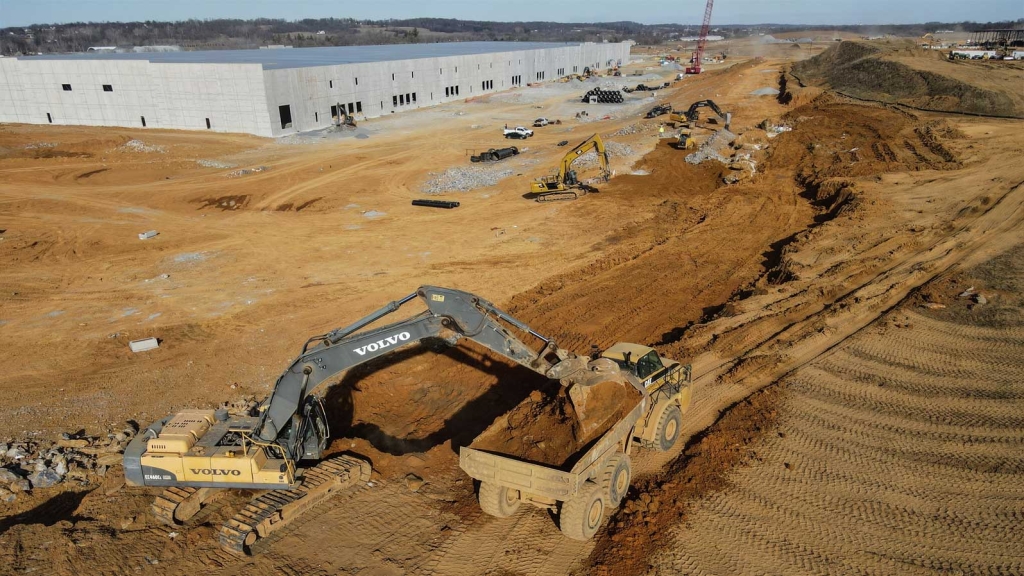
Many newer equipment models are outfitted with GPS, which helps to make outcomes more precise. Learn more about these tech-savvy tools and how they can benefit your project in this blog.
Soil Compaction
After cuts and fills are complete it’s time for compacting the soil. This is when weight and pressure are applied to the soil to create a more stable ground that’s less prone to shifting and settling.
Finishing
Once the major base is formed, the site work contractors will make the final adjustments to ensure the land meets the specifications for the project.
Factors That Affect Grading
There are variables on every site that will influence how your site work team approaches grading. Here are some examples.
Soil Type
There are several different soil compositions. Most soils are comprised of clay, sand, silt, or a combination called loam. They can also contain varying amounts of rock. Each soil type has different characteristics, impacting their ability to be compacted and moved.
For example, soils that contain a large amount of clay expand when wet and hold onto moisture for a long time. But as the soil dries, it shrinks considerably. To prevent issues from this expansion and contraction, site work contractors need to take a specific approach to prevent damages. This includes excavating deeper, making reinforcements, and stabilizing the soil.
Additionally, sandy soils need to be compacted and at times reinforced. Or if your site has a lot of organic material below grade, it will have to be removed, or else you’ll risk shifting and sinking issues as it decomposes.
To learn more about each soil type and its impact on a construction project, check out this blog.
Size & Scope
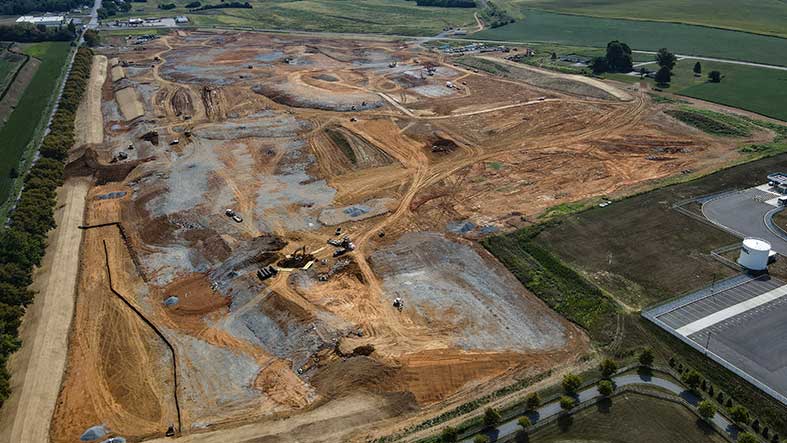
Additionally, the original topography and natural land features on the site can impact the grading. Existing slopes, elevations, hills, and depressions could potentially work with — or against — what your site ultimately needs. Likewise, natural waterways and rock formations (above or below ground) may take special considerations to work around.
Environmental Factors
The site’s local climate, ecosystems, and adjacent properties should all be considered when altering the grade of your site.
Areas prone to heavy rainfall will likely need well-constructed drainage and water management systems, and the grading on your site will have a huge impact on how this is achieved. Nearby wetlands, protected areas, and even other developed areas can also influence your site and its grade. It will help to control how water enters and flows from your property. In some cases, there will be regulations that can influence your site.
Choosing the Right Partner
Grading requires the right equipment, the right expertise, and a high level of precision and care. After all, they’re creating the base for your new building.
At Horst Excavating, we have over 60 years of grading and site work experience. From multi-acre commercial facilities to small park renovation and everything in between, our expertise spans industries and decades.
We’re looking forward to the opportunity to learn more about your project and see how we can help get it done. Click the link below to tell us about it!
Posted October 23, 2023

